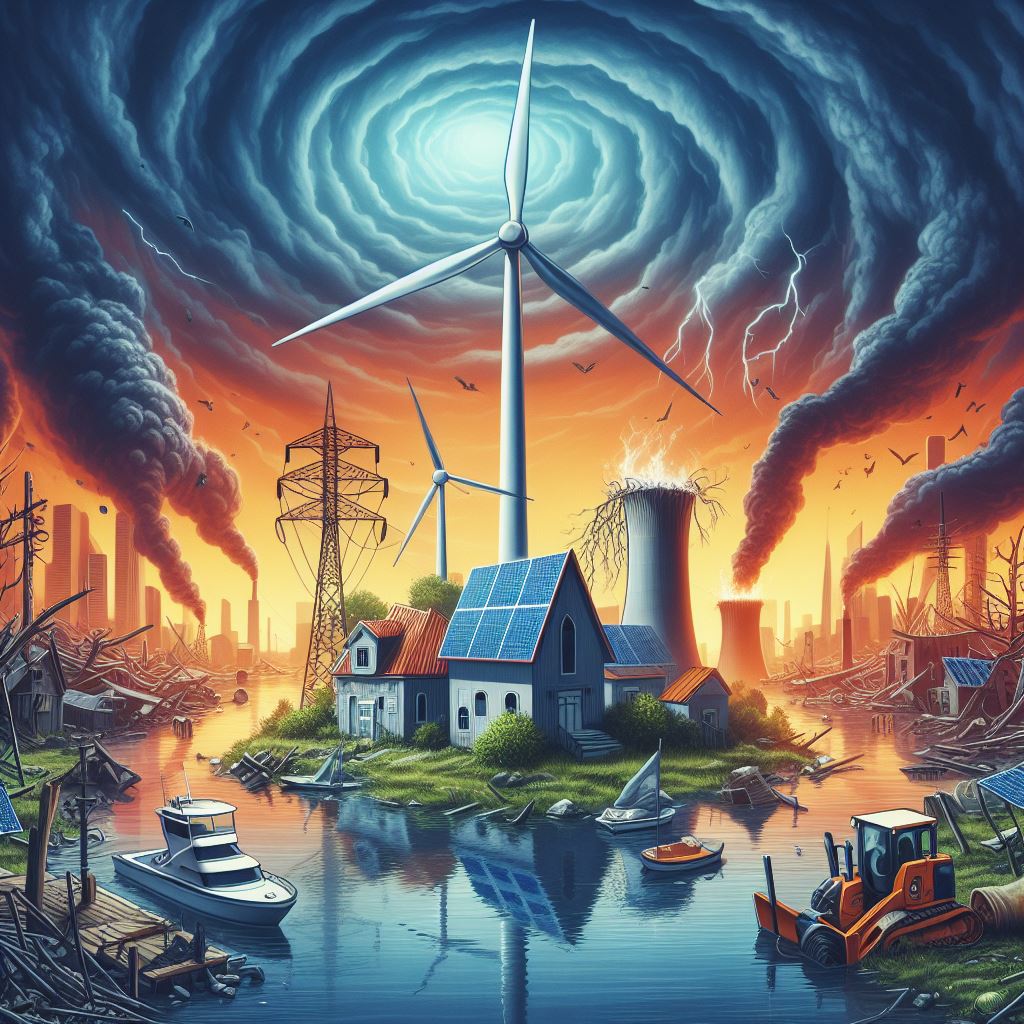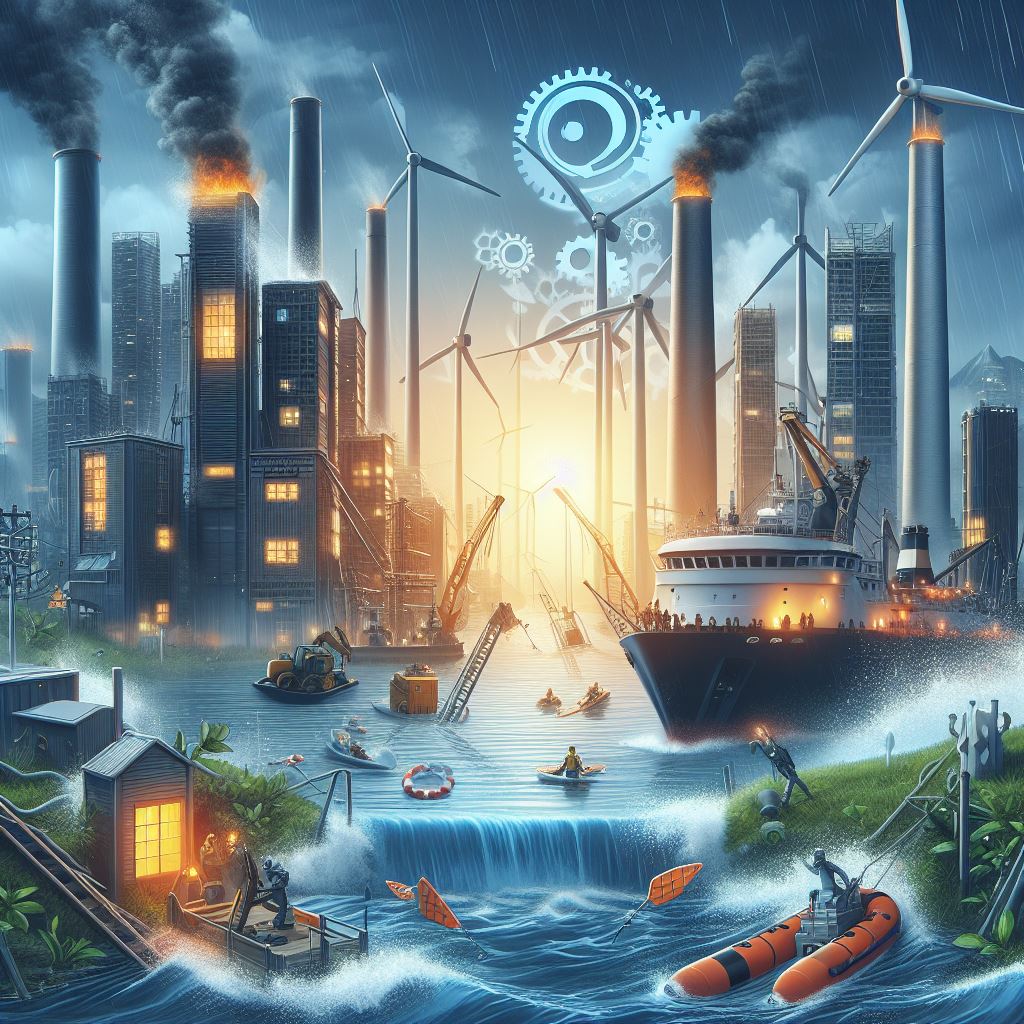 When disaster strikes, the first thoughts that rush to our heads are those of safety, shelter, and how to bounce back. Amid the chaos, the significance of sustainable power sometimes flies under the radar, yet it’s a cornerstone in disaster recovery efforts. Renewable energy it’s a lifeline during emergencies, a beacon of hope and resilience that shapes how we respond, recover, and rebuild.
When disaster strikes, the first thoughts that rush to our heads are those of safety, shelter, and how to bounce back. Amid the chaos, the significance of sustainable power sometimes flies under the radar, yet it’s a cornerstone in disaster recovery efforts. Renewable energy it’s a lifeline during emergencies, a beacon of hope and resilience that shapes how we respond, recover, and rebuild.
The Power that Stays When All Goes Dark
In the aftermath of a natural disaster, when the conventional power grid fails and darkness descends, renewable energy emerges as the unsung hero. Picture the scene: chaos reigns, but amidst the rubble, solar panels, portable wind turbines, and bioenergy solutions stand tall, offering a glimmer of hope. These technologies, once merely symbols of sustainability, now embody resilience and salvation.
Solar panels, capturing the sun’s energy, transform it into a beacon of light, illuminating the darkness and symbolizing a path forward. Portable wind turbines harness the unseen power of the wind, providing a reminder of nature’s strength and adaptability. Bioenergy solutions, derived from organic matter, offer warmth and sustenance, proving that even amidst disaster, life persists.
Renewable energy transcends its conventional role. It becomes a lifeline, powering communication networks and enabling communities to reconnect with the outside world. It breathes life into medical facilities, ensuring essential services endure. Above all, it instills a sense of resilience and hope, reminding humanity of its ability to innovate and endure in the face of adversity.
Sustainable Power Solutions: More Than Just an Alternative
The beauty of renewable energy technologies lies in their versatility and immediacy. Solar panels, for instance, can be rapidly deployed to generate electricity on-site, turning sunlight into a much-needed power supply for emergency shelters, medical facilities, and community centers. These solutions don’t rely on fuel supply chains, which can be disrupted during natural disasters or conflicts, making them a reliable source of power when it matters most.
Wind turbines, another jewel in the crown of renewable energy applications, can be instrumental in coastal areas frequently hit by hurricanes or tropical storms. Their ability to harness the wind’s power offers a sustainable source of electricity, helping communities to power critical infrastructure even in the aftermath of a disaster.
Similarly, bioenergy and hydropower technologies have shown tremendous promise in providing energy solutions in the face of calamities. From converting waste materials into electricity to utilizing small-scale hydropower systems in flooded areas, these renewable sources offer innovative and adaptable ways to meet energy demands during emergencies.
Renewable Energy in Disaster Recovery
Renewable energy plays a pivotal role in disaster recovery efforts that extend far beyond immediate relief. Its significance lies in fostering resilience, enabling communities to endure, adapt, and swiftly rebound from crises. Integrating renewable energy technologies into disaster recovery strategies isn’t just an option; it’s imperative for sustainable progress and long-term community well-being.
The advantages of renewable energy in disaster recovery are numerous. Firstly, it reduces dependency on fragile infrastructure and fossil fuels, thereby mitigating the risks associated with fuel spills and other environmental hazards. Secondly, renewable energy offers a cost-effective alternative to rebuilding damaged power grids, ensuring a more efficient and sustainable energy supply in the long run. Moreover, investments in renewable energy initiatives bolster local economies, generate employment opportunities, and contribute to a cleaner, greener environment for future generations.
By harnessing the power of renewable resources like solar, wind, and bioenergy, communities can not only recover from disasters but also fortify themselves against future calamities. These technologies serve as pillars of resilience, providing reliable energy sources when traditional systems falter. They empower communities to regain control over their energy needs, fostering self-sufficiency and reducing vulnerability to external disruptions.
Integrating renewable energy into disaster recovery plans isn’t just about bouncing back—it’s about building forward. It’s about crafting a future where communities are equipped to withstand adversity, adapt to changing circumstances, and thrive in harmony with the environment. Through strategic investments and innovative solutions, renewable energy emerges as a beacon of hope, guiding communities toward a brighter, more sustainable tomorrow.
Renewable Energy’s Growing Impact
The impact of renewable energy in emergencies and disaster recovery is a testament to the silent revolution happening in the sector. Across the globe, examples abound of renewable energy solutions making a significant difference in the lives of affected communities. From solar-powered water purification units providing clean drinking water in flood-affected regions to mobile solar generators lighting up earthquake-hit areas, the applications and benefits of renewable energy in disaster relief are vast and varied.
Prioritizing renewable energy in emergency planning and recovery strategies leads to actively working toward a future where communities are more resilient, self-sufficient, and sustainable.
Renewable energy technologies have the potential to transform disaster relief efforts, offering sustainable power solutions that are clean, accessible, and readily deployable. Their role in supporting and enhancing disaster recovery processes is undeniable, and as we continue to face the challenges of a changing climate and more frequent natural disasters, the importance of renewable energy in emergencies will only grow.
Renewable Energy for a Resilient Future
Embracing renewable energy for disaster relief and recovery isn’t just about adopting new technologies; it’s about changing our mindset toward energy consumption, disaster preparedness, and community resilience
By investing in renewable energy applications, promoting research and development, and encouraging the integration of renewable sources into national and local disaster planning efforts, we can ensure that when the next disaster strikes, our response will be stronger, smarter, and more sustainable.
In a world that’s increasingly vulnerable to the whims of nature and the impacts of climate change, renewable energy stands out as a beacon of hope. It’s a testament to human ingenuity and resilience, offering a path towards a brighter, more sustainable future. The true power of renewable energy is in its capacity to empower communities, rebuild lives, and restore hope in the aftermath of catastrophes.

